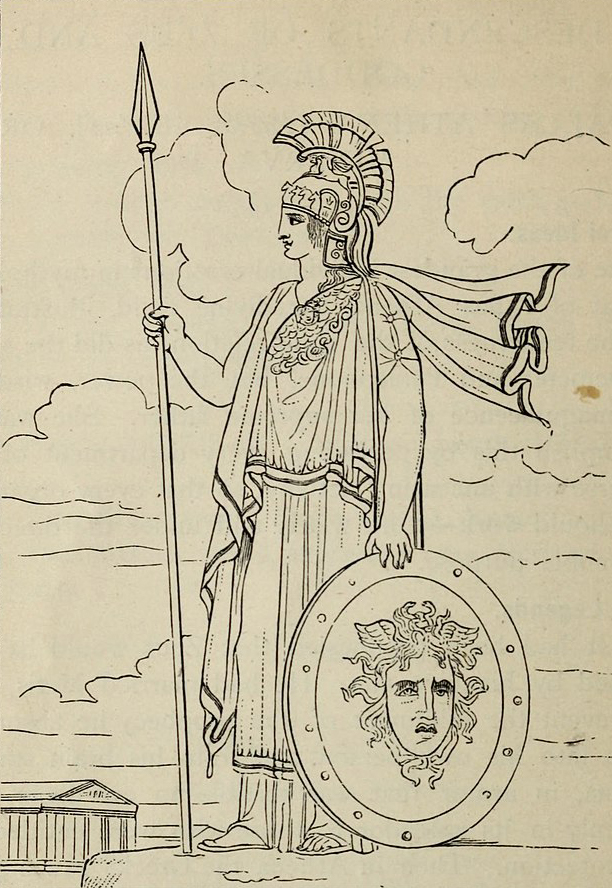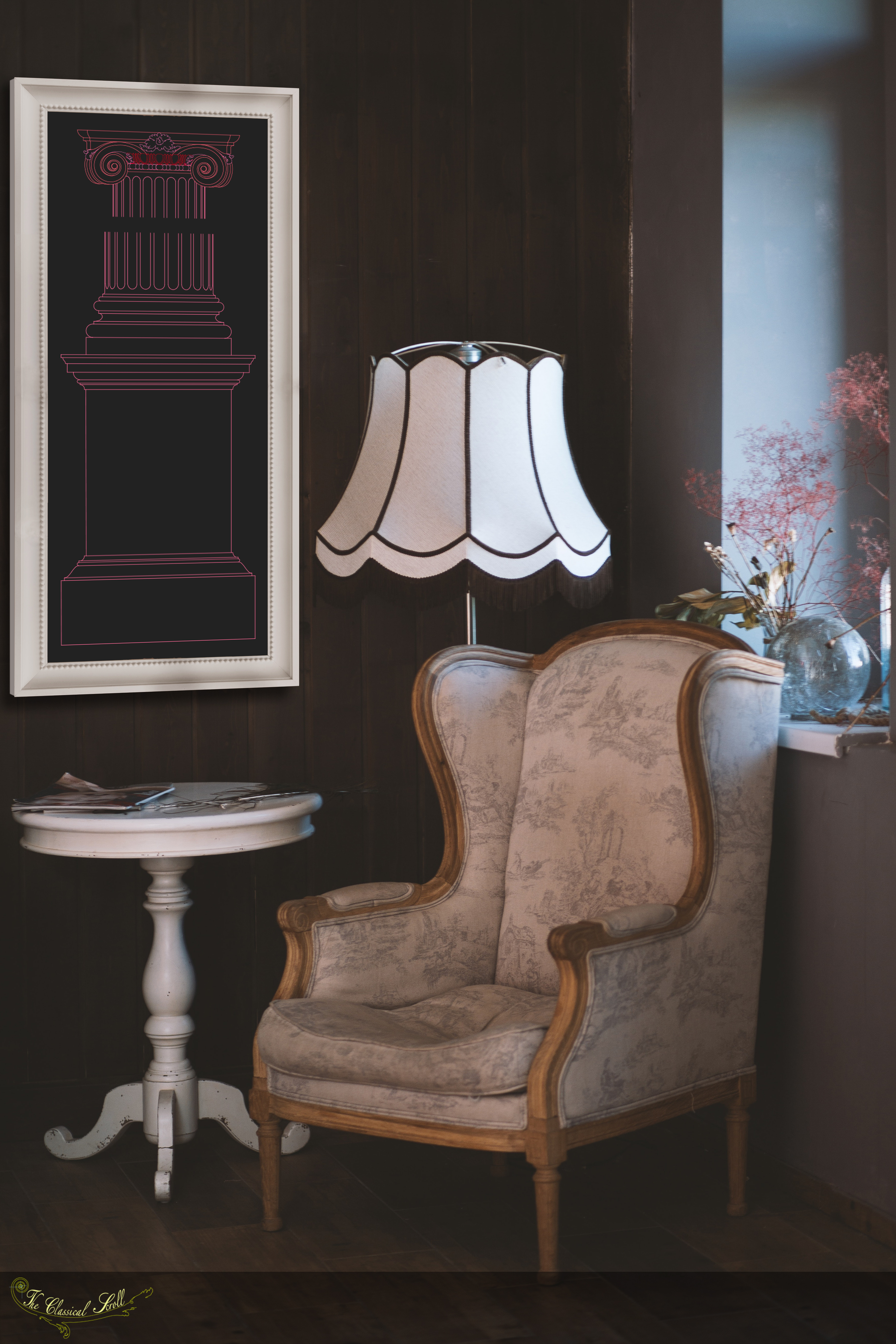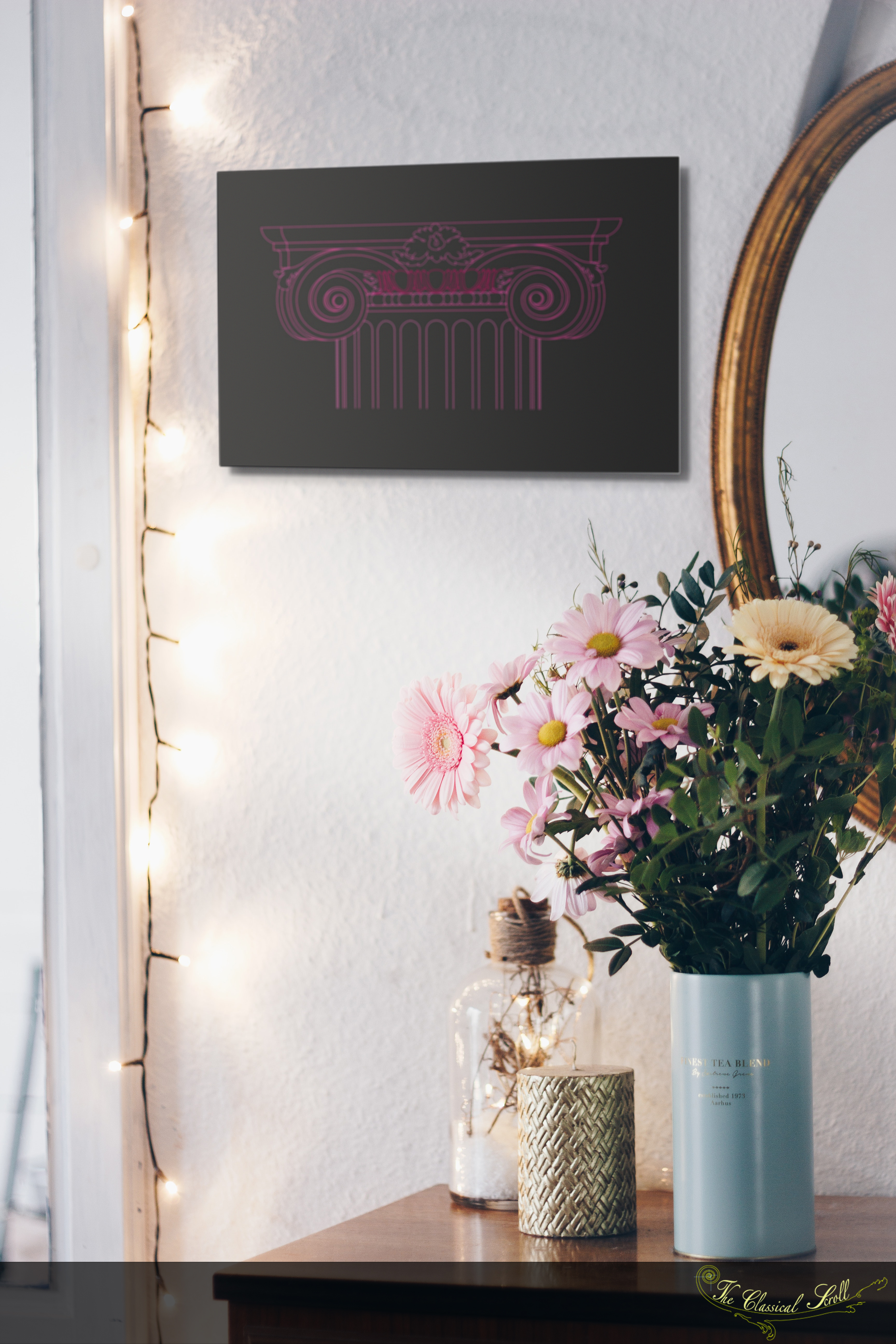.
The Parthenon is the best example of classical architecture from ancient Greece.
It is seen as a symbol of democratic principles practised in the state of Athens.
.
It was built in 438 BCE, to honour Athena who had bestowed victory upon the people of Athens against the Persian army.
A colossal idol of the goddess stood inside the Parthenon located on the Acropolis.
.
Phidias’ Sculpture in Honour of Athena
The renowned Phidias not only supervised the construction of the whole project but also made the Athena Parthenos with his own hands.
He sculpted her body in ivory and her long dress in solid gold.
.
The goddess held a spear in her left hand with a shield placed on the side.
She also wore a helmet with a plume of feathers.

.
Architectural Features of the Parthenon
The 46 Doric columns surrounding the building were more than 6 feet wide at floor level and 34 feet in height.
To learn more about the origins of the Doric order, see this post.
.
The entablature, of the Doric order, typically has panels known as metopes which tell a story through sculpture.
At the Parthenon, metopes on the east had Olympian gods fighting giants. Whereas those on the west depicted Athenians in battle against Amazons, a mythical tribe of women soldiers.
.
There were 23 columns inside the 2 cellas, the one on the east much larger than the other.
The smaller cella served as the treasury called Opisthodomus where valuable offerings were stored.
.
The beams running above the interior columns also displayed figures in relief. Originally, they were painted in many different colours.
Below is one artist’s impression of what the Parthenon would have looked like in it’s colourful state. You can find out more about colour in classical architecture in this post.

.
Stories carved in Stone
The entrance porticos had triangular pediments at the top, each one having around 20 figures adorning it.
The pediment on the east showed the birth of Athena alongside the passing of a day.
While the western one represented Athena struggling against Poseidon to take over Athens.
.
On the south were featured centaurs with the torso of a man and legs of a horse wrestling with Lapiths.
The north side is presumed to have described the end of the Trojan war.
.

.
More than meets the Eye
Iktinos and Callicrates have been identified as the architects who named it Hekatompedos, a structure of 100 feet, because that is approximately how wide the Parthenon is.
In their pursuit of perfection, they introduced certain unusual elements to the architecture.
.
The platform on which the temple was built had a parabolic curve sloping outward to the sides.
This helped drain rainwater but also visually enhanced the appearance of a straight line.
Similarly, the columns were expanded in the middle up to 1.6 inches so that they would not seem to be shrinking from afar.
.
Arrephoroi
The temple’s name Parthenon refers specifically to the virginity of Athena.
In an ancient Greek house, the quarter which belonged to un-married women was known as Parthenon.
This name was also initially reserved for the temple’s western cella where 4 young women entitled arrephoroi spent a whole year weaving her a saffron-coloured dress called the peplos.
.
Peplos
At the summer Festival of Panathenaea, this peplos was presented to Athena Polias, an older idol made of olive-wood kept in a separate altar within the Erechtheion situated nearby.
During the Panathenaea, people gathered and walked up to the Acropolis in a religious procession. Many scenes from this yearly event have been captured in the reliefs of the Parthenon.
They show people bringing fancy objects and animals for sacrifice, in order to please their gods.


.
Among these sculptural reliefs, is the image of an old man folding a large piece of cloth with a young boy. Right next to the old man, stands a matron making sure the girls in her charge are holding furnishings and fabrics properly.
Scholars have taken the images of people carrying and folding pieces of cloth to be a visual reference for Athena’s dress. The position of these scenes in the centre of the eastern elevation also conveys the religious importance of the peplos for the ancient Greeks.
.
Most of the sculptures from the temple’s exterior are housed in the British Museum. Find more information here.
.

.
P.S. Take a moment to see the Classical Scroll architecture prints. You will definitely enjoy it!
.
.
Please select your own language from the ‘Translate’ menu below.
.





